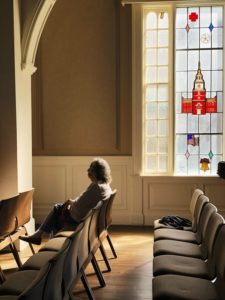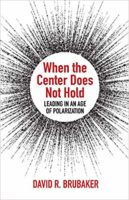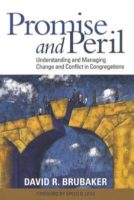Congregations around the world have made a dramatic pivot in recent weeks—from regular face-to-face gatherings to entirely online services and meetings via Facebook Live, Zoom, and other platforms. The transformation that decades of proliferating social media and streaming platforms failed to achieve was accomplished by the coronavirus pandemic in just a month.
But what has it been like on the receiving end?
I am a product of six decades of congregational formation. Born and raised in a minister’s home, I later joined Mennonite, Catholic, and Presbyterian congregations. I have been ordained as an elder, served as chair of congregational council, and taught multiple adult formation classes. In addition, I have worked as a consultant with over 50 congregations, ranging from Unitarian Universalist to Southern Baptist. With Robert Putnam, I believe that congregations are the most important source of social capital in our country, as they gather more people on a weekly basis than any other social institution.
When we can’t gather
But what happens when congregational members can no longer physically “gather?” I will offer my own experience.
I have been a member of the Park View Mennonite Church (PVMC) in Harrisonburg, Virginia, for nearly 16 years. On Sunday, March 15, services were cancelled out of the growing awareness of the need for “social distancing” and the concern that gathering several hundred people on a Sunday morning could put members at risk. The following Sunday, March 22, a small group gathered at the congregation to offer a live-streamed worship service (with appropriate social distancing).
I am part of the teaching team for one of the adult formation classes at PVMC, known as Logos. That first virtual Sunday, a member of the class started an email chain with several questions that sparked a number of thoughtful responses. A week later, I proposed that we gather by Zoom at our normal hour to discuss the service and sermon. The following Sunday, 28 participants joined the class on Zoom, about double our normal class attendance. Above-average attendance has continued over the past month.
In recent weeks, I have read more than a dozen articles about “how to” conduct virtual worship services and encourage ongoing fellowship—the technical aspects have been well covered. I want to address the personal and emotional experience of virtual worship and fellowship. I will do so by identifying what I think we have lost—and gained—in this transition.
What we have lost
In reflecting on what has changed the last month, I realized that I was missing three things.
First, the opportunity to sing together as a congregation. I admire and appreciate the four-part harmony of the quartet that gathers every Sunday morning for “congregational singing” in front of empty pews, but it’s just not the same. I long for the opportunity to sing again with a congregation of a couple hundred rather than just four.
Second, the informal conversation (“fellowship”) during the coffee break between the worship service and formation classes. I am enough of an extrovert to enjoy these spontaneous conversations with long-term members and folks I barely know. Now that we are all “staying at home,” these informal conversations do not happen naturally.
Finally, the two-dimensional space of Facebook Live or Zoom is just not the same as an embodied presence. I am pleased that I can see facial expressions online and hear people’s voices, but the disembodied nature of these interactions can reduce us to talking heads.
What we have gained
Despite these losses, I am impressed with some of the things we have gained during this time.
First, we have increased participation and “reach” by going virtual. Former members who are now scattered in various parts of the country (and world) can now live-stream worship services. A colleague who moved to Iowa plans to rejoin our virtual adult formation class this coming Sunday.
Second, congregational leaders have demonstrated significant creativity in adapting to this brave new virtual world. The Children’s Sermon is now broadcast from the home of the person providing the input, often with their own children participating. On a recent Sunday, seven different individuals reflected on what they are experiencing and learning from this pandemic during the traditional sermon time.
Finally, going completely online has opened up ongoing communication during the week, whereas before we primarily only communicated on Sunday mornings. Members of our Logos class have continued to exchange email messages on our class list-serve, perhaps reflecting the desire for greater communication now that so many of us are respecting the “stay at home” order of our governor.
I will not claim that the gains outweigh, or even equal, the losses. However, in this time of social distancing and “sheltering in place,” congregations around the world are finding creative ways to stay connected and celebrate faith that transcend our geographic isolation.
What may not change back
What will remain when this pandemic passes (as they all inevitably do)? I expect more of an integration of technology into our congregational lives. In part, it will be out of a recognition that not all business meetings require driving vehicles to congregational parking lots. And it will also reflect our growing comfort with multiple ways of communicating.
We have entered a new era, when images are replacing words and virtual communication is supplanting face-to-face gatherings. Nevertheless, the future will require both high tech and high touch—the human connection for which we all long.
Perhaps the greatest takeaway from our current virtual reality is that we were never meant primarily to attend a congregation, but to be a congregation. In this crisis time, we can explore more deeply what it means to be a congregation. After all, what is a “congregation” but a group of human beings who “congregate” periodically, to connect with and encourage one another—and then to scatter once again…to love and to serve.
David Brubaker has consulted with organizations and congregations in the U.S. and a dozen other countries on organizational development and conflict transformation. He is the author of Promise and Peril, on managing change and conflict in congregations, and When the Center Does Not Hold, on leading in an age of polarization. David recently retired from his role as Dean of the School of Social Sciences and Professions at Eastern Mennonite University, and is now a Professor Emeritus of Organizational Studies.



